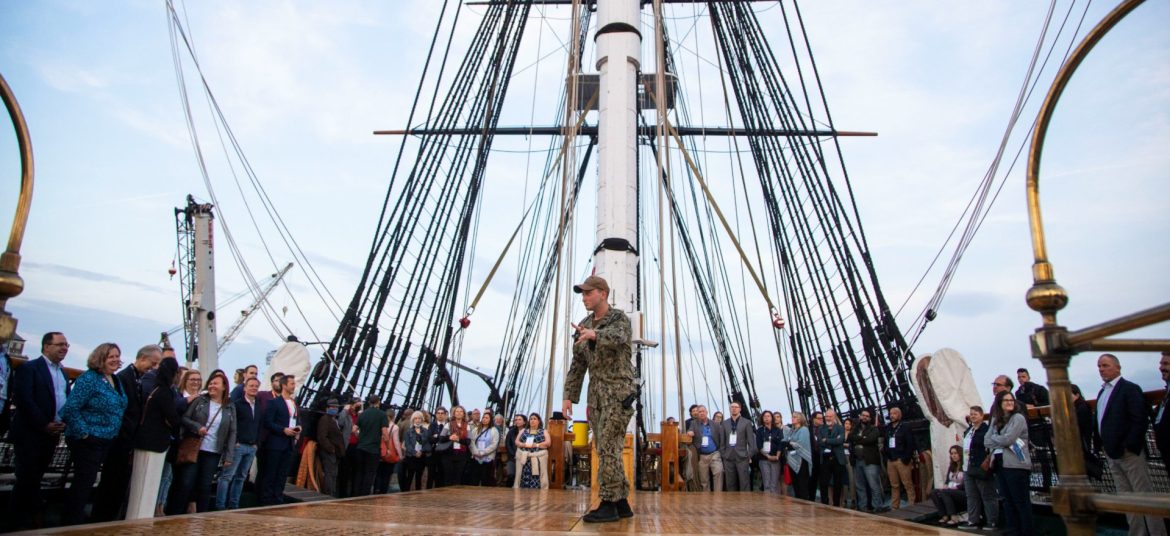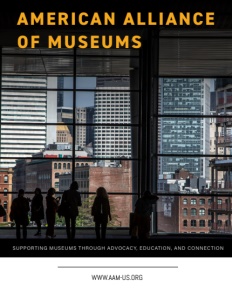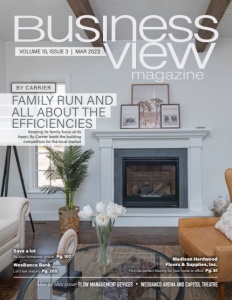American Alliance of Museums
Supporting Museums Through Advocacy, Education, and Connection
Representing the needs of museums across the nation, the American Alliance of Museums provides the voice for the cultural sector
From art and history museums to science centers and zoos, museums are a part of the landscape of our communities, sharing information, and connecting people through culture, interest, and creativity in a variety of unique ways. For 116 years, The American Alliance of Museums (AAM) has been representing this vast and diverse group, supporting museums through advocacy, education, and connection, while promoting a forward-thinking approach that allows museum professionals to move the field forward.
Laura Lott, AAM President, and CEO shares, “Our mission now is pretty much the same as it’s always been, but it’s continued to evolve with the professionalization of the museum field and the current times.”
“‘We champion equitable and impactful museums by connecting people, fostering learning and community, and nurturing museum excellence.’ Since 1906, we’ve been championing museums through our advocacy work here in Washington, DC, and around the country.”
She adds that membership in the AAM is geared toward providing museum professionals with not only training and resources to do this important work but also what she describes as, “inspiration and connections to each other that they need to move the field forward and move forward in their careers.”
With museum funding coming from private and public donations, as well as some government sources, Lott provides an interesting statistic about the financial contributions these organizations provide. She says, “People don’t think about museums in terms of financial terms, but I think it’s important to note that museums are a $50 billion industry, supporting about three-quarters of a million jobs. Even though most are non-profits and are often perceived as taking from government and other sources to do their work, they actually contribute $15 billion in federal, state, and local tax revenue, back to the public coffers.”
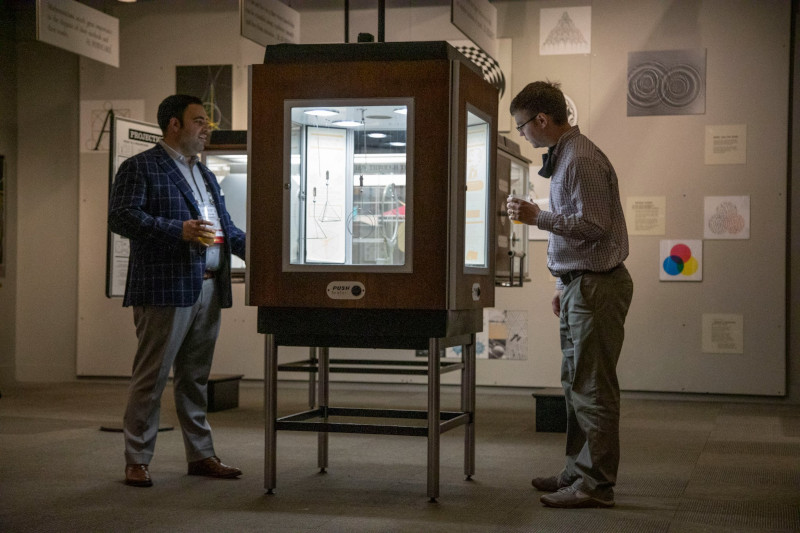
Along with this she notes, “There’s another statistic out there that we like to quote, which is that there are more visits to museums than there are attendees at all major league sporting events and theme parks combined.”
With that in mind, it is necessary to discuss the challenges the past few years have brought to the museum world, with many having to close their doors for extended periods as a result of lockdowns and safety measures.
“Museums were in some cases among the last public places to be able to reopen and welcome people back into their places, which of course, has always been their primary focus in the past,” Lott relays.
“They pivoted in all sorts of ways to provide online education and inspiration, resources and training, and a lot of other experiences virtually when they couldn’t be open to the public during the pandemic.”
She acknowledges that there is a growing trend to formalize and fund these virtual offerings, even as we move forward from COVID, partly because of the fact that museums were able to reach a broader and more diverse audience through their online programs.
Environmental sustainability is also top of mind in the museum world, both in the impact, their facilities can have on the environment, as well as providing education about climate change, and ways that individuals and communities can be a part of the effort towards a more sustainable future.
AAM is also investing in sustainability as an organization, reducing paper and transportation by finding new ways to interact with people digitally, locating their offices in a LEED building, and having staff reduce their carbon footprint by working from home on certain days. The alliance has also partnered with the Phipps Conservancy on a toolkit that provides resources to encourage museums to become more sustainable.
AAM also has two priorities in its strategic framework that Lott believes are trends and focus areas for the museum field. She conveys, “This is not new to museums, but there is an increased focus on being more inclusive. Museums were often built on a history of racism, and colonialism, like a lot of structures. They are recognizing that and working hard to diversify their staff, their audiences, their collections, and programming, to represent all people in our communities and make people feel welcome.”
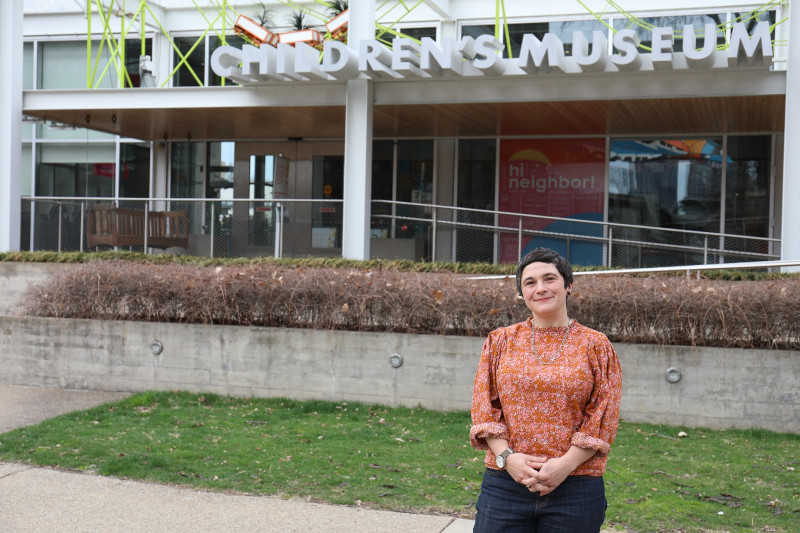
The second priority is aimed at guiding museums in identifying their roles in communities and in society and communicating this to the communities they serve. “There is a museum that will touch every social issue out there, from climate change to equity inclusion, to bridging divides in our communities, to health and addressing learning loss in students from the pandemic and other education issues. I’m not sure the general public often thinks about museums playing an integral role in those issues necessarily,” she asserts.
The administration of accreditation for members is another part of AAM’s role, helping museums maintain standards of excellence in all aspects of their work. Lott elaborates, “There’s not a lot of regulation in the museum industry, so this is an internal kind of regulation that holds museums to certain professional standards. It started with how they cared for their collections, and it’s evolved into how they operate. In the next couple of years, we’re evolving it even further into how they are inclusive, which is a major initiative that we are prioritizing. We kind of hold the standard for the field, we don’t have any authority to stand on a mountain and command what those standards are, but part of our role is to bring the museum field together to agree on what they’re going to hold themselves and each other accountable for in terms of their operations.”
With over 1000 accredited museums, the process involves reaccreditation every 10 years, with site visits from peer reviewers, followed by a review from a commission.
The alliance also hosts two in-person events each year. The first is Museums Advocacy Day, which brings together about 400 museum advocates. The event offers training on issues, legislation, and a full day of meetings with government representatives. The second major in-person event is the American Alliance of Museums annual meeting, the largest convening of museum professionals worldwide.
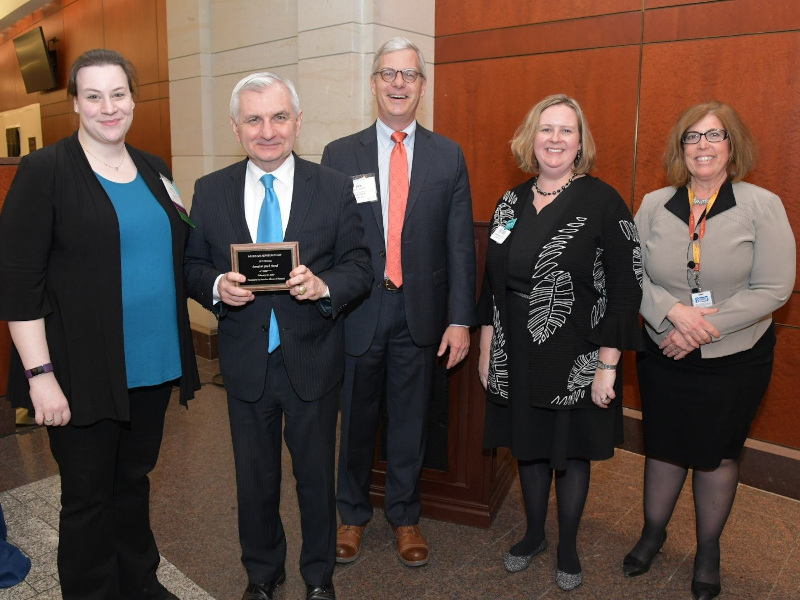
“It’s about 5000 folks who come, primarily the U.S. but also from other parts of the world, for four days to have conversations and sessions and networking opportunities, to learn and talk about trends in the museum field and then to take skills and contacts back home with them, when they leave,” Lott recounts.
The event also includes an Expo of museum products and service providers. “It moves around the country, this next spring, it’ll be in Denver. We’re really excited to shine a light on the tremendous museum community that’s in the Denver region,” she maintains.
Partnerships with other museum service organizations, such as those that represent art museums, history museums, or science centers, as well as regional, state, and individual representatives, are another part of AAM’s role in the field.
“There are about 46 different museum service organizations that divide up the field. So, while AAM is the one place where everyone comes together and focuses on things that are most important to be done at that consolidated comprehensive level, we work with and support and benefit from organizations that are at the discipline-specific level,” Lott explains.
“In addition, we raise funds to support a lot of these initiatives. We have had a really wonderful partnership with the Ford, Alice Walton, and Mellon foundations over the last couple of years. The three foundations came together to support a really unprecedented initiative to diversify museum boards.” AAM also works with other foundations, supporting endeavors such as the Creative Aging Initiative, which addresses the aging population, and finds ways to ensure continued participation and engagement in museums.
“We really feel like AAM has an opportunity and a responsibility to connect the museum field to a variety of industries and issue areas, foundations, and others who can see museums as a way to advance their cause and their work in communities,” she says.
As part of an alliance that advocated for $3 billion in relief funding for museums during the pandemic, Lott suggests that financial stability will continue to be a top priority for AAM.
As for what this might look like for museums heading into the future, she says, “I’m not sure there’s a silver bullet for how they’re suddenly going to find more revenue. I think it is all related to their social and community impact and is relevant to those communities in a variety of ways, not just as a nice place to visit on the weekend, but really integral to the education ecosystem and the health system and other infrastructure that communities need and have.”
“They need to be really open about that, take credit for the work that they are doing. Just like with any other industry, as our communities change, museums have to look at really reaching out to and engaging and being trusted by their whole communities. Otherwise, they’re effectively just losing market share,” she concludes.
AT A GLANCE
American Alliance of Museums
What: Advocating, supporting, and connecting museums across America
Where: Headquarters in Washington DC
Website: www.aam-us.org
